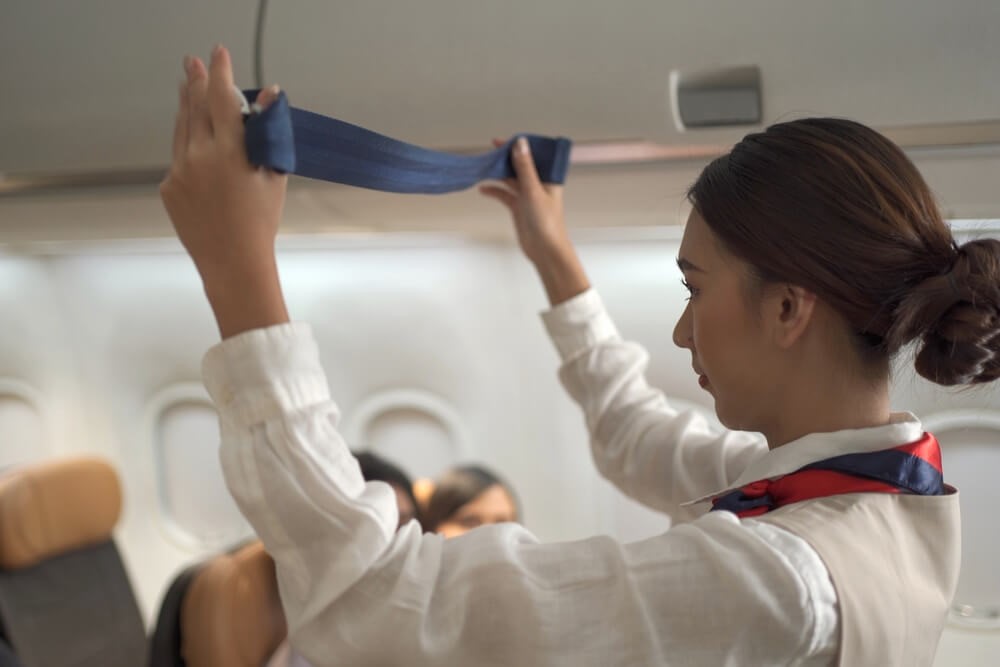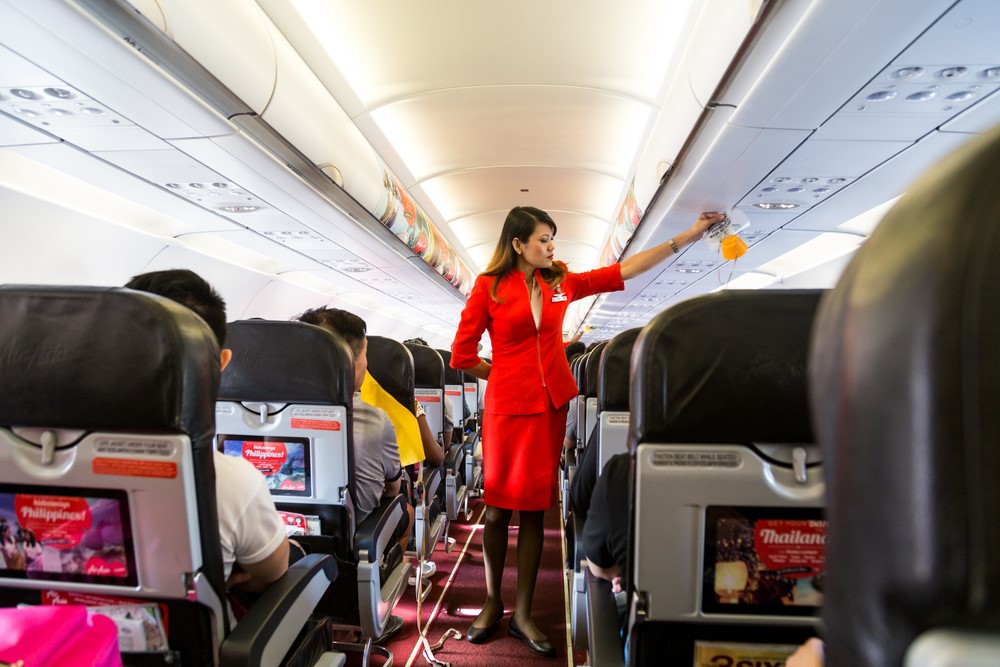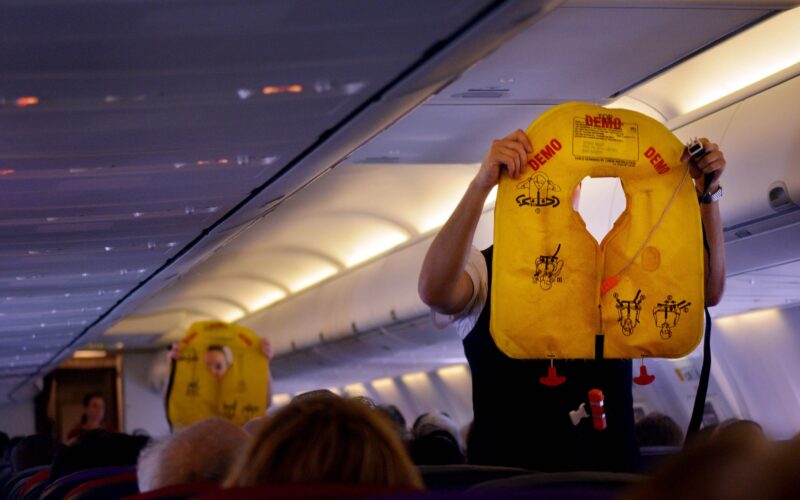Whether the flight you have boarded is 30 minutes or 16 hours, there’s one element as passengers we all experience – the safety demonstration.
The safety demonstration is a legal requirement which commercial airlines must complete prior to takeoff.
It is either completed by cabin crew or via video screens and covers the use and location of emergency equipment and exits.
Although the brief touches on subjects which appear to be common sense, the industry recognizes that in unfamiliar emergency situations, passengers rarely act rationally.
Here, AeroTime breaks down the safety features included in the pre-flight safety briefing and explains why it’s important to pay close attention.
Table of Contents
Emergency exits
Your nearest exits are pointed out by cabin crew because accidents have shown surprising behavioral trends by evacuating passengers, including automatically returning to the door of entry rather than the nearest to evacuate.
Exit floor lighting is also pointed out, which in poor visibility guides passengers to the nearest exit at low level, away from smoke and fumes in the cabin.

Seatbelt
In darkness, when potentially tired and jet-lagged, even the simplest action of unfastening a seatbelt can become a challenge, especially if panic sets in.
Passengers will often reach to their side as they would in a car to unfasten the seatbelt, so it is important that they are reminded how to use the buckle.

Oxygen mask
Most aircraft fly with the cabin pressurized no higher than 8,000ft. Once the human body goes above 10,000ft, hypoxia – a lack of oxygen – takes effect and if prolonged can be fatal.
Once the cabin altitude exceeds 14,000ft oxygen masks will automatically drop from the overhead compartments, above the seats, in the galleys and in the toilets.
Although considered an extremely rare occurence, passengers must know how to use and operate the masks for themselves. At an altitude of 35,000ft, the body has approximately 30 seconds before hypoxia will limit even the most basic completion of tasks.
The oxygen system only lasts around 10 minutes, giving enough time for the aircraft to descend to a lower altitude where the human body can breathe normally.

Lifejacket
In 1996, an Ethiopian Airlines Boeing 767 ditched into the Indian ocean, off the coast of the Comoros islands, following a hijacking and eventual fuel starvation.
Despite surviving the initial impact, most of the passengers had inflated their lifejackets inside the aircraft, becoming trapped and subsequently drowning, unable to reach an exit.
Cabin crew are required to demonstrate the use of the lifejacket, highlighting its features which include a toggle to inflate after exiting, a tube in case of manual inflation, along with a torch and a whistle.
When faced with a real life emergency or with an evacuation of up to six hundred passengers through a handful of aircraft doors, some of which might not be useable, every second counts.
The safety demonstration is designed for passengers to quickly recall potentially lifesaving knowledge, so for the two minutes that it takes to listen, you might just save your life.

